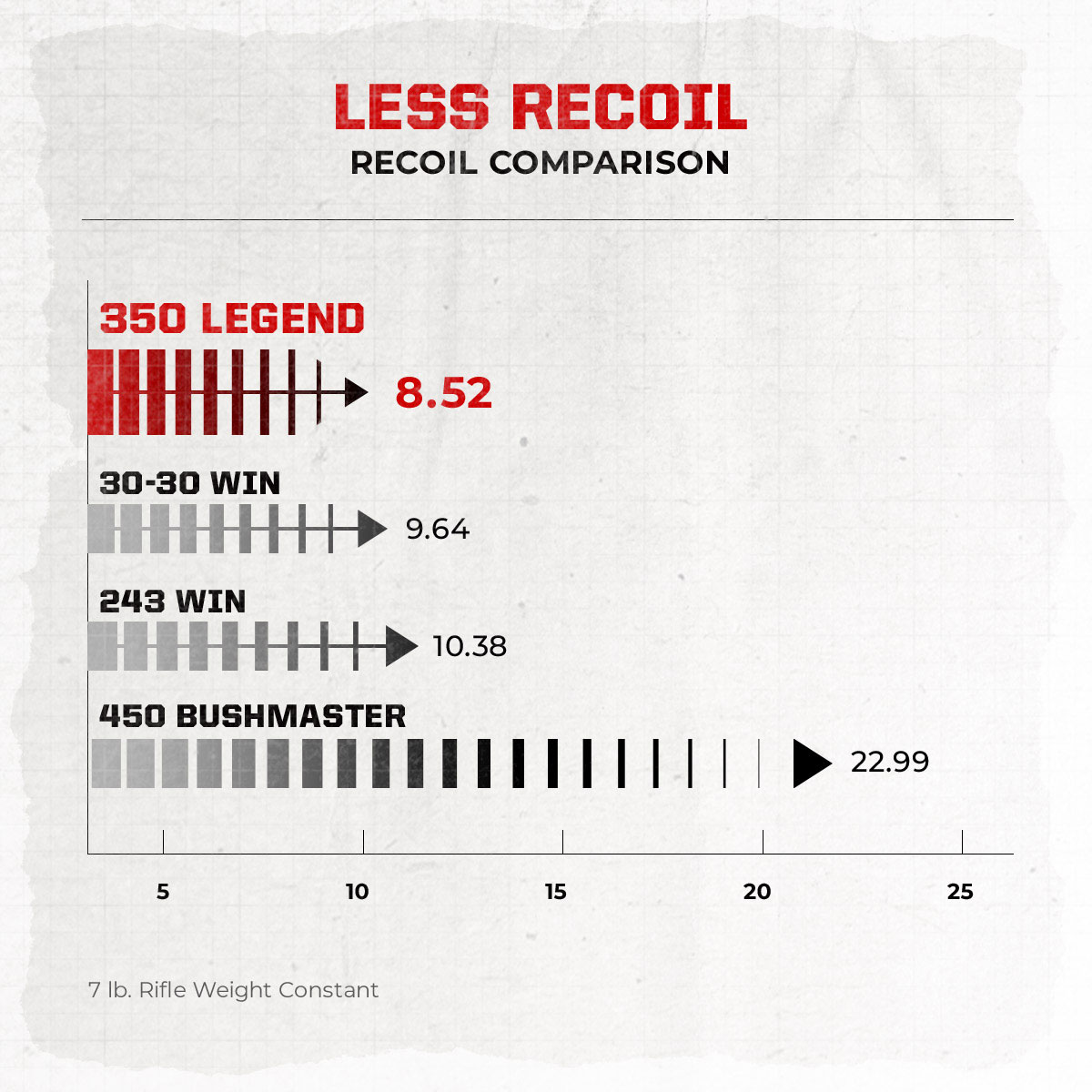

So the figures in any recoil table should be taken as approximate. Also, please understand that there are dozens of loads for any given bullet weight in any cartridge that will produce the same velocity, but a different amount of recoil. These sorts of things cannot be accounted for in a recoil table. Gas-operated semi-automatic actions reduce apparent recoil by spreading it over a longer period of time. A good recoil pad can help soften the blow to the shooter's shoulder. One of the most important of these is the fit and shape of the rifle stock. In addition to gun weight, it is influenced by many factors. However, perceived recoil, what the shooter feels, is a highly subjective matter. Choose a rifle weight appropriate for the loads you intend to shoot. Just because it can be done does not mean it makes sense, despite what you might read in advertising copy. 300 WSM and the result will be a dramatic increase in kick. Violate this principle by, for example, chambering a lightweight, short action rifle for a powerful Magnum cartridge like the. In the real world, firearms chambered for less powerful cartridges are typically built lighter than firearms chambered for more powerful cartridges.

Increase the gun weight by, say, 25% and the recoil goes down by 25%. In the shooting sports we call that reaction recoil or "kick." It can be measured or computed empirically and has been for this recoil table.ĭo not forget that rifle weight is a crucial factor in the recoil equation, inversely proportional to recoil. This means that the momentum of a rifle's reaction will exactly equal the momentum of the bullet and powder gasses ejected from the barrel. There are many recoil tables available online one excellent one can be found at Aquila Firearms.For every action there is an equal and opposite reaction that is one of the physical laws of our universe. of recoil velocity are the approximate upper limit of comfort level for most of us. For most deer cartridges, it is generally accepted that 20 ft./lbs. So, how much felt recoil is too much for the average shooter? That’s impossible to say, of course, since we’re all different. Generally speaking, a 6 ½ pound ultra-light rifle will generate about 20 to 25 percent more felt recoil than an 8 ½ pound rifle when shooting the exact same load. For any given caliber and load, a lighter rifle kicks more than a heavier rifle. Perhaps the best thing you can do is to avoid using ultra-lightweight rifles. (You can also add a muzzle brake, but this should not be necessary with most standard deer cartridges.) Also, gas operated semi-automatic rifles like the Browning BAR and Remington Model 7400 reduce perceived recoil by spreading it over a longer period of time. These include making sure the rifle stock fits well, and attaching the stock with a quality recoil pad. There are also some things you can do to help tame felt recoil. A heavier person will be able to absorb more recoil than a smaller, lighter person, for example. Of course, we all feel recoil differently. Suffice it to say that, all things being equal, the faster the bullet, more felt recoil is generated, while heavier rifles produce less felt recoil. This is because your body has less time to move with the recoil. Generally speaking, the faster a rifle comes back at the shooter, the more it hurts. In this calculation, MV (mass x velocity) of everything ejected from the rifle’s muzzle-mostly the bullet and powder gasses-will be equaled by MV of the recoiling rifle. There are four primary factors considered when calculating recoil-bullet weight (mass), bullet velocity, powder charge and rifle weight (mass). It is calculated by a mathematical formula based on Newton's basic law of physics, which states that for every action there is an equal and opposite reaction. For that reason, selecting a cartridge that will not kick you like a mule is an important, if sometimes overlooked, part of selecting the ideal deer cartridge.įree recoil describes the rifle moving backward unrestrained at the shot, and is generally described with two measurements-free recoil energy and recoil velocity. If your deer rifle kicks you so badly it causes you to flinch, you’ll never be a consistently good field shot.


 0 kommentar(er)
0 kommentar(er)
